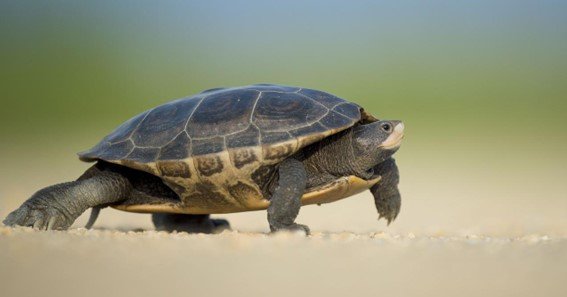Are you considering getting a water turtle, or maybe you just did? Then it is important to have a good place where your turtle can live and thrive. An aquarium or terrarium is the perfect place to have a water turtle in. But what more do you need? What does it take for your water turtle to thrive in its new home? Let us find out. It’s simple to mistake turtles for low-maintenance pets due to their sturdy shells and somber personalities. While to some extent it is true, there are a few particular things that you just cannot afford to get wrong. A heat lamp for turtles is one of them.
Because they don’t require many things, turtles are quite simple to care for. But to them, the things they require are really necessary. Heat lamps are among those items.
click here – How To Create The Ultimate Camping Survival Kit
Why do turtles need a heat lamp?
Heat lamps are necessary for the health of turtles and should be provided. Turtles are cold-blooded creatures; when their environment changes, so does their body temperature. For instance, a 1°C rise in their environment will also result in a 1°C rise in their body temperature.
Additionally, because turtles rely on their surroundings for heat, they are typically more lethargic at night and in the early morning. To start the day and rev up the bodily processes, they will need to warm up.
They, like humans, do not generate heat through shivering, digesting, and so on. Turtles, as ectotherms, acquire only a small amount of heat from physiological sources.
What Is the Recommended Wattage for a Turtle Heat Lamp?
A heating lamp is necessary for every turtle; however not every turtle would need the same kind of heat lamp. Depending on the type of your turtle, you would need a more powerful heat lamp or a less powerful one. Some heat lamps offer more heat than others.
When determining the ideal wattage for a turtle heat lamp, there is no single magic number. It typically comes down to the species, age, tank size, and health of your pet. Understanding the various heat lamp wattages and which is best for your turtle as a pet is crucial for turtle owners.
The size of the tank is another important consideration. We’re talking about wattages between 50 and beyond 100. We have 75 watts in between. These lesser watts accomplish the job just as well as the 100+ watts, therefore they are not always necessary. Let’s now look at how to use these bulbs.
A medium-sized aquarium with at least 50 watts is sufficient for a little turtle measuring 4 to 6 inches. If there are two turtles, the tank must be larger, and the heat lamp’s wattage must be increased. A heat light of 75 watts will suffice. Larger turtles require a larger aquarium with a capacity of 70 to 125 gallons. This will necessitate 100 watts or more.
The distance between the lamp and the turtle is also important. A heat light of 50 watts should be positioned 6 to 8 inches away from the turtle. It should be between 7 and 9 for a 75-watt bulb. A 100-watt bulb should be positioned 9 to 11 inches away from the turtle, while a 100+ lamp should be 11 to 14 inches away.
click here – Why Quality Management is Important for the Manufacturing Industry?
What Type of Lighting Do Turtles Require?
Like all reptiles, turtles require a mix of UVA and UVB lamps in addition to regular sunshine. While UVA and enhanced sunshine are provided by the majority of heat and basking lamps, UVB light is still a relatively novel idea. Therefore, be careful to choose a heat lamp that produces all three of the light wavelengths that your turtle requires.
Although UVB radiation has various advantages, the most significant one is the synthesis of Vitamin D3. The development of healthy shells and bones depends on this vitamin.
What Will Happen If Turtles Do Not Have A Heating Lamp?
As mentioned earlier, a turtle cannot survive if its basic needs are not met. A heat lamp is one of the necessities that the turtles require. These lamps aid in the regulation of the turtles’ body temperatures. Especially, it is the newborn turtles that are at the maximum risk if they do not have them. A fully mature turtle’s body can still adjust to a change in temperature to some degree, but baby turtles cannot.
Lack of heat can induce malnourishment in newborn turtles since heat aids in various bodily functions such as food digestion. Not only that, it also makes them more prone to respiratory infections. As a matter of fact, lack of heat is so grave that a young turtle can only survive for a few weeks without heat.
Thus, we see how important heat is for a turtle’s growth. So, if you ask is heat essential for a turtle growth – it absolutely is.

